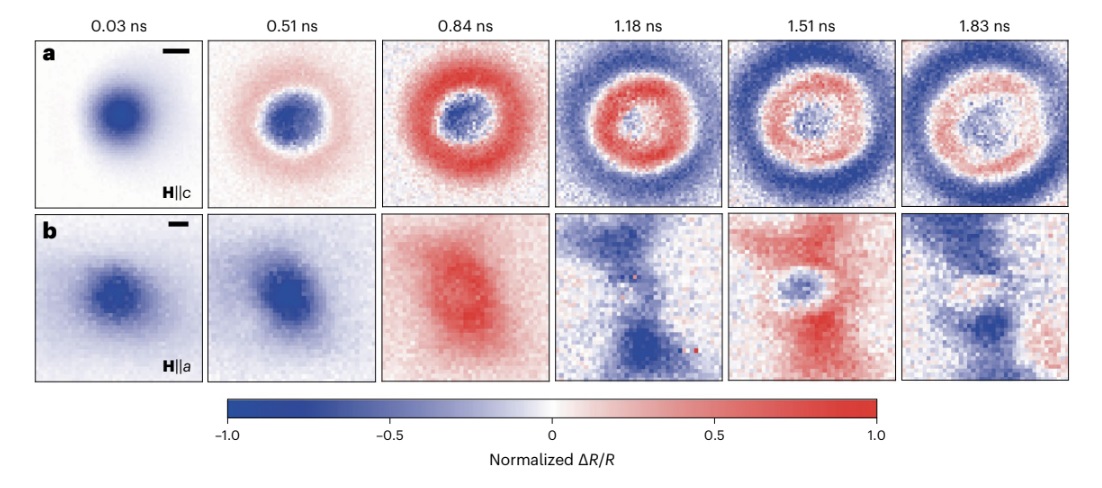May 9, 2024
By William Schulz
The spin of the electron is nature’s perfect quantum bit, capable of extending the range of information storage beyond “one” or “zero.” Exploiting the electron’s spin degree of freedom (possible spin states) is a central goal of quantum information science.
Recent progress by Lawrence Berkeley National Laboratory (Berkeley Lab) researchers Joseph Orenstein, Yue Sun, Jie Yao, and Fanghao Meng has shown the potential of magnon wave packets – collective excitations of electron spins – to transport quantum information over substantial distances in a class of materials known as antiferromagnets. Their work upends conventional understanding about how such excitations propagate in antiferromagnets. The coming age of quantum technologies – computers, sensors, and other devices – depends on transmitting quantum information with fidelity, over distance.
With their discovery, reported in a paper published in Nature Physics, Orenstein and coworkers hope to have moved a step closer to these goals. Their research is part of broader efforts at Berkeley Lab to advance quantum information by working across the quantum research ecosystem, from theory to application, to fabricate and test quantum-based devices and develop software and algorithms.
Electron spins are responsible for magnetism in materials and can be thought of as tiny bar magnets. When neighboring spins are oriented in alternating directions, the result is antiferromagnetic order and the arrangement produces no net magnetization.
To understand how magnon wave packets move through an antiferromagnetic material, Orenstein’s group used pairs of laser pulses to perturb the antiferromagnetic order in one place while probing at another place, yielding snapshots of their propagation. These images revealed that magnon wave packets propagate in all directions, like ripples on a pond from a dropped pebble.

Snapshots of the time-evolution of magnon wave packets in each of the two spin wave branches of CrSBr confirm the theory of coupling via the magnetic-dipole interaction. Top row: As predicted, propagation in the lower frequency branch is isotropic, meaning the speed of propagation is the same in all directions. Bottom row: Confirmation of anisotropic propagation in the higher frequency spin wave branch. The images were obtained by rastering the pump beam and sampling the reflectance at fixed time delays between pump and probe pulses. (Credit: Joseph Orenstein/Berkeley Lab)
The Berkeley Lab team also showed that magnon wave packets in the antiferromagnet CrSBr (chromium sulfide bromide) propagate faster and over longer distances than the existing models would predict. The models assume that each electron spin couples only to its neighbors. An analogy is a system of spheres connected to near neighbors by springs; displacing one sphere from its preferred position produces a wave of displacement that spreads with time. Surprisingly, such interactions predict a speed of propagation that is orders of magnitude slower than the team actually observed.
“However, recall that each spinning electron is like a tiny bar magnet. If we imagine replacing the spheres by tiny bar magnets representing the spinning electrons, the picture changes completely,” Orenstein said. “Now, instead of local interactions, each bar magnet couples to every other one throughout the entire system, through the same long-range interaction that pulls a refrigerator magnet to the fridge door.”
This long-range interaction accounts for the remarkable speed of spin propagation discovered by the Berkeley Lab team.
This research was supported by the Department of Energy’s Office of Science.





